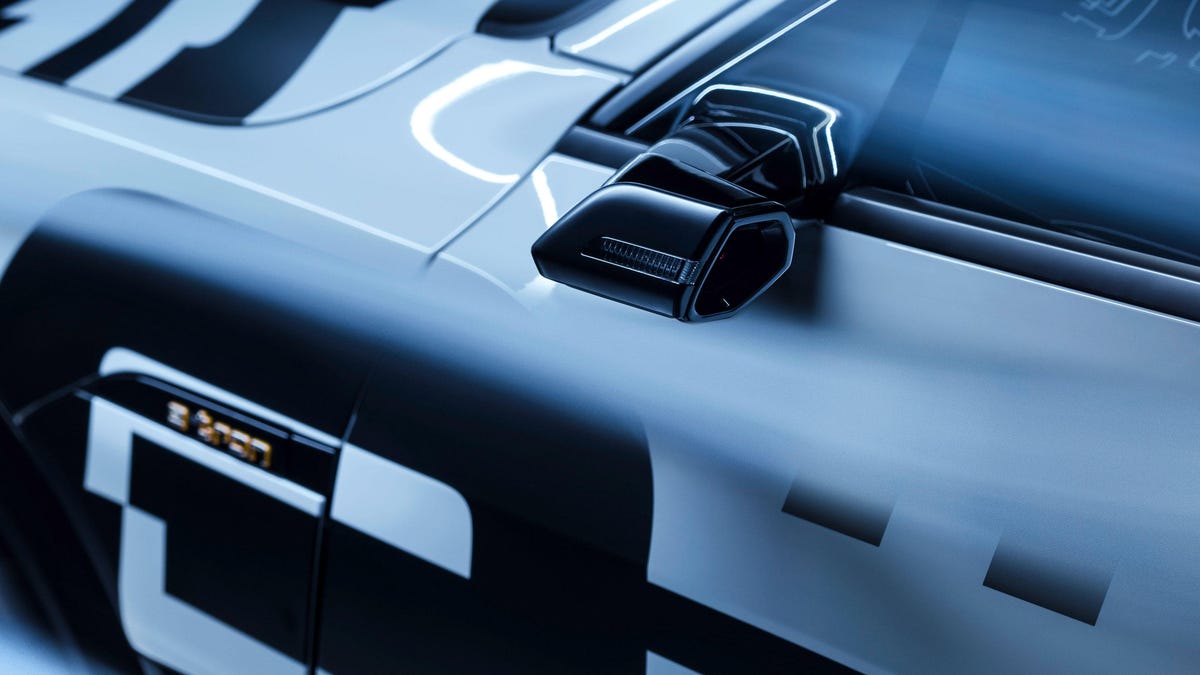2020 Audi E-Tron EV: Here's how its virtual side mirrors will work
Audi's battery-electric SUV will get a long-promised bit of tech. But there's a catch.

If you've been a car fan for a while, you probably know that we've been promised cameras and screens in place of side mirrors for a long time. A really, really long time. In fact, I remember being wowed by concept cars like the Cadillac Solitaire at auto shows in the late '80s that featured the aero-friendly technology (and there were probably others before General Motors ' striking show car).
Globally, production cars with side-view cameras that replace mirrors have been essentially nonexistent, hampered as of late by regulatory issues more than cost or complexity concerns. That appears poised to change, however, as the forthcoming 2020 Audi E-Tron SUV, the company's first-ever battery electric vehicle, will also become the first volume production passenger car from any automaker to be offered with the tech.
As previously confirmed, when it launches, the new 2020 Audi E-Tron will feature what the company calls "virtual exterior mirrors" as an option. But we now know more about how they will work: The system will use small exterior side cameras whose images are displayed on 7-inch OLED screens in the cabin.
7-inch OLED screens above the door handles mimic the placement of traditional side mirrors.
According to Audi, like a traditional glass side mirror, the screens on the E-Tron system can adjust their field of view to suit the driver's preference. Unlike normal mirrors, though, they can zoom in and out. Additionally, three different view modes will be offered on the E-Tron's mirrors -- one optimized for highway driving, another to aid in turning and one for parking.
The aerodynamic advantages of deleting side mirrors are obvious, as removing these assemblies can cut drag significantly. Estimates suggest improvements can range between 2 and 7 percent, a substantial improvement that can aid fuel economy and squelch wind noise. Scrubbing side mirrors can also pay visual dividends, too, and not just because the resulting body sides look sleeker. For its part, the E-Tron will still have a pair of small stanchions projecting out of its body sides to mount the rear-facing cameras, though they still should look much cleaner to the wind.
Of course, there's a hiccup: According to a company spokesperson, "Audi is working with the authorities, but do not have any intro date at present."
That's right, Washington regulators still have yet to legalize this technology, which means we're unlikely to see the tech offered Stateside when the E-Tron first hits dealers next year as a 2020 model. Thus far, the tech is expected to be offered in select markets, including Germany, Audi's home.
Unfortunately for Audi, Washington continues to waylay the carmaker's plans to make many forms of advanced technology available to American consumers. On Monday, Roadshow revealed that the company's Matrix HD intelligent high-beam headlamps (as found on the new 2019 Q8 SUV) won't pass regulatory muster.
What's more, earlier this year, Audi confirmed that its much-ballyhooed Traffic Jam Pilot, a semiautomated Level 3 driver-assist suite, will not be made available to US A8 buyers as originally hoped. The reason? You guessed it: Federal safety regulators haven't established a national framework for such technologies.
2020 Audi E-Tron's tech-heavy interior: Read our deep dive into the electric SUV's next-generation cabin.

